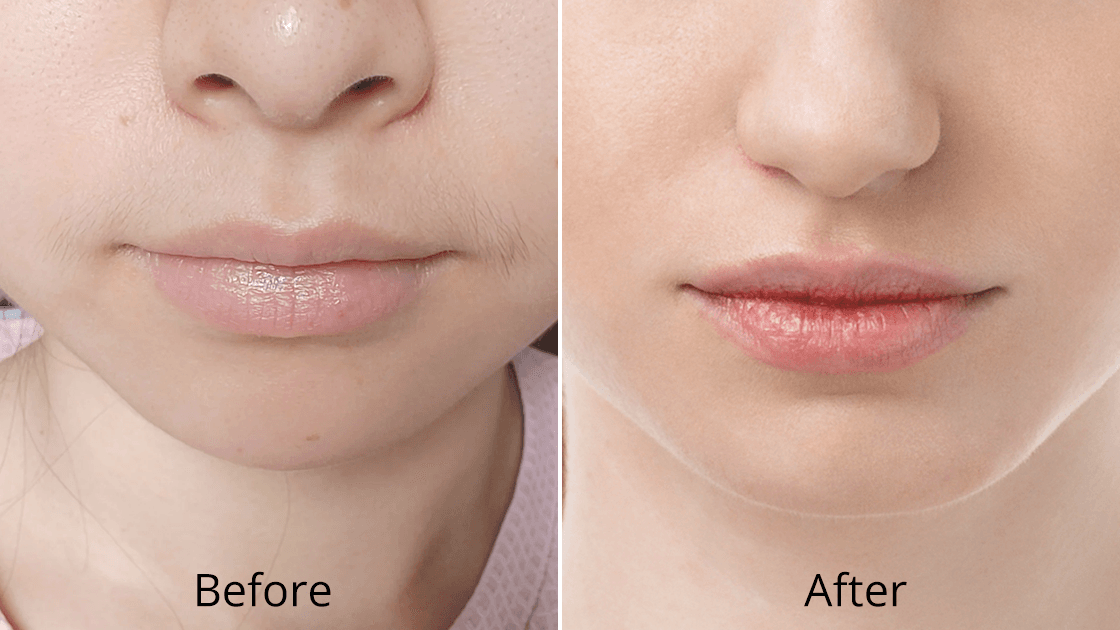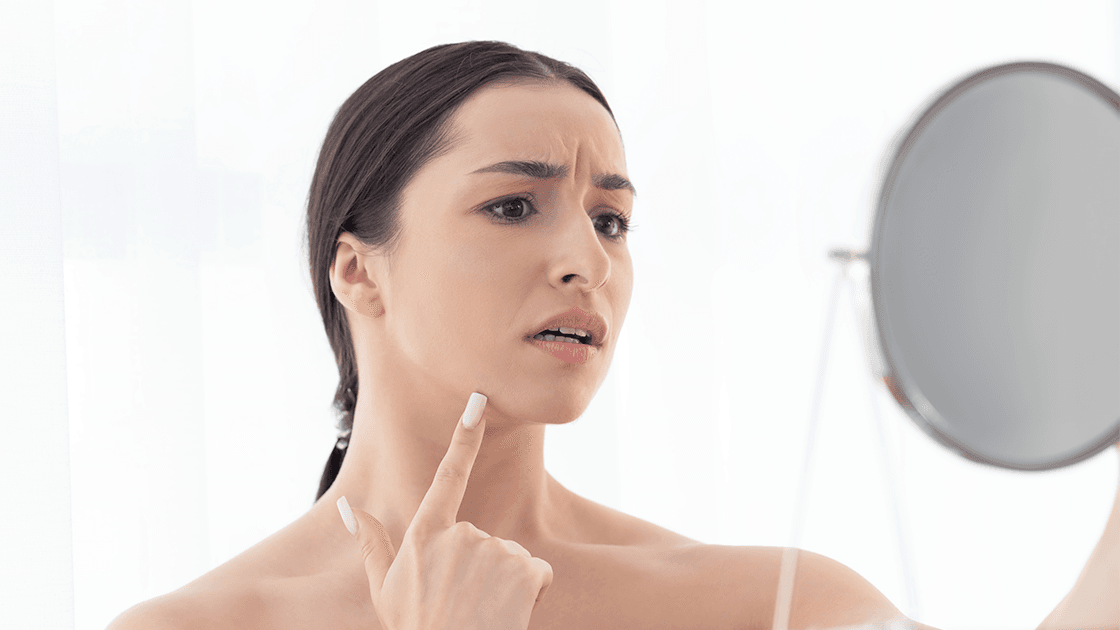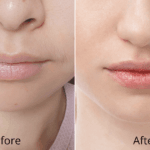1. Introduction: What Is Laser Lipolysis and Why It Matters
Laser lipolysis is a breakthrough in non-invasive 바디 컨투어링, offering a safe, effective alternative to traditional liposuction. It uses targeted laser energy—typically at 1060–1064nm wavelengths—to heat and disrupt fat cells through controlled hyperthermia. This process increases adipocyte membrane permeability, releasing triglycerides, which break down into free fatty acids and glycerol, then naturally exit the body via the lymphatic system. Unlike surgical fat removal, laser lipolysis delivers precise thermal energy to subcutaneous fat without incisions. It not only reduces fat but also stimulates collagen production, leading to skin tightening and improved texture. The procedure simultaneously liquefies fat, coagulates small blood vessels, and promotes collagen remodeling. Modern devices incorporate cooling systems and real-time temperature monitoring for safety and comfort. With minimal downtime, laser lipolysis appeals to individuals seeking targeted fat reduction and skin rejuvenation—without the recovery of surgery.
2. Best Areas for Laser Lipolysis: Where Results Shine Brightest
The effectiveness of laser lipolysis varies significantly depending on the anatomical location and the specific characteristics of the adipose tissue being treated. Understanding which body areas respond most favorably to this technology is crucial for setting realistic patient expectations and achieving optimal outcomes. Laser energy penetration, tissue thickness, and local circulation patterns all influence treatment success.
2.1 Face and Neck Definition
Facial and cervical applications of laser lipolysis have gained considerable popularity due to the precision required in these delicate anatomical regions. The face and neck present unique challenges due to the proximity of vital structures, thinner skin layers, and the need for subtle, natural-looking results that enhance facial harmony.
2.1.1 Double Chin Reduction
Submental adipose accumulation, commonly referred to as a double chin, represents one of the most successful applications of laser lipolysis technology. The submental region contains relatively superficial fat deposits with good vascular supply, facilitating effective heat distribution and subsequent fat metabolism. Treatment in this area typically produces visible contouring within 6-8 weeks post-procedure. The precision of laser energy delivery allows for targeted reduction without affecting surrounding tissues, including the marginal mandibular nerve or platysma muscle. Patients often report improved jawline definition and enhanced cervical angle, contributing to a more youthful facial profile.
2.1.2 Jawline and Neck Contouring
Cervical contouring through laser lipolysis addresses adipose deposits along the jawline and upper neck region, areas that significantly impact facial aesthetics. The procedure targets both subcutaneous fat and can stimulate collagen remodeling in the overlying dermis, resulting in improved skin tightness. Anatomical considerations include the superficial location of the facial nerve branches and the need for even energy distribution to prevent irregularities. Treatment protocols must account for skin thickness variations and individual healing responses. Results typically manifest as enhanced mandibular definition and reduced skin laxity, particularly beneficial for patients experiencing age-related volume changes.
2.2 Arm Slimming and Upper Body Tone
Upper extremity applications of laser lipolysis focus on areas where diet and exercise often prove insufficient for fat reduction. The arms present moderate treatment complexity due to varying tissue thickness and the need to maintain natural arm contours while reducing circumferential measurements.
2.2.1 Upper Arm Fat (Bat Wings)
Posterior brachial adipose deposits, colloquially known as “bat wings,” respond exceptionally well to laser lipolysis treatment. This area typically contains fibrous fat deposits that can be effectively targeted through controlled thermal energy delivery. The posterior arm’s anatomical structure allows for optimal laser penetration while minimizing risk to underlying structures. Treatment success correlates with initial tissue laxity and patient age, with younger patients showing superior skin retraction post-treatment. The procedure addresses both volume reduction and skin tightening, essential for achieving natural-looking arm contouring. Multiple treatment sessions may be required for patients with significant adipose accumulation or pronounced skin laxity.
2.2.2 Bra Bulge & Back Rolls
Dorsal adipose deposits, including bra line protrusions and posterior axillary rolls, present excellent candidates for laser lipolysis intervention. These areas typically contain stubborn fat deposits that resist conventional weight loss efforts due to their fibrous nature and limited circulation. The treatment approach requires careful energy distribution to ensure smooth contouring without creating irregularities. Anatomical landmarks include the latissimus dorsi muscle borders and scapular positioning, which guide optimal treatment zones. Patient positioning during treatment is crucial for accessing these areas effectively while maintaining comfort. Results include improved clothing fit and enhanced torso silhouette, with full effects visible within 8-12 weeks post-treatment.
2.3 Midsection Makeover
The abdominal region represents the most commonly requested area for laser lipolysis treatment, offering excellent results due to the substantial subcutaneous adipose layer and favorable healing characteristics. This region’s anatomy allows for comprehensive treatment approaches targeting multiple aesthetic concerns simultaneously.
2.3.1 Abdominal Fat
Central abdominal adiposity responds remarkably well to laser lipolysis, with studies indicating that a single treatment with a 1060-nm diode laser is safe and effective in reducing unwanted fat in the abdomen as objectively measured employing ultrasound. The abdominal region’s substantial subcutaneous fat layer provides optimal conditions for laser energy penetration and thermal distribution. Treatment protocols must consider individual variations in fat distribution, muscle tone, and skin elasticity. The procedure can effectively address both upper and lower abdominal segments, though treatment parameters may require adjustment based on tissue characteristics. Patients typically observe circumferential reduction and improved abdominal contour within 4-6 weeks, with continued improvement over several months as collagen remodeling occurs.
2.3.2 Love Handles (Flanks)
Lateral abdominal adipose deposits, commonly termed love handles, represent another highly successful application of laser lipolysis technology. Non-invasive approaches could be an option for a growing number of patients who are risk-averse and are seeking out non-invasive alternatives to surgical procedures such as liposuction. The flank region’s anatomy allows for excellent laser penetration while the natural body contours facilitate even energy distribution. Treatment in this area requires careful attention to the transition zones with adjacent body regions to ensure smooth, natural-looking results. The lateral positioning allows for optimal patient comfort during treatment while providing adequate access for comprehensive coverage. Results include improved waist definition and enhanced overall body silhouette.
2.3.3 Lower Back Contouring
Lumbar region fat deposits present unique treatment challenges due to varying tissue thickness and the proximity to deeper anatomical structures. Lower back contouring through laser lipolysis addresses adipose accumulations that contribute to an undefined waistline and poor clothing fit. The treatment approach must account for individual spinal curvature and muscle development patterns that influence fat distribution. Energy delivery requires careful modulation to prevent thermal injury while achieving adequate adipocyte disruption. Patient positioning is critical for optimal access and comfort during treatment. Successful outcomes include improved posterior waist definition and enhanced transition between the torso and hip regions, contributing to an overall more aesthetically pleasing body contour.
2.4 Lower Body Shaping
Lower extremity laser lipolysis applications address some of the most challenging areas for conventional fat reduction methods. These regions often contain stubborn adipose deposits with complex anatomical considerations that require specialized treatment approaches.
2.4.1 Thigh Gap & Inner Thigh Slimming
Medial thigh contouring represents a complex laser lipolysis application due to the region’s anatomy and the proximity of neurovascular structures. Inner thigh adipose deposits often contain fibrous elements that respond well to thermal energy, though treatment must be carefully controlled to prevent thermal injury to sensitive tissues. The procedure can effectively reduce circumferential thigh measurements while maintaining natural contours. Patient positioning and draping are crucial for optimal access while preserving modesty and comfort. Treatment success depends on initial tissue characteristics, with firmer, more fibrous fat responding better than soft, loose adipose tissue. Results include improved thigh gap appearance and reduced chafing, though realistic expectations must be established regarding the limitations of non-invasive treatments.
2.4.2 Outer Thighs (Saddlebags)
Lateral thigh adipose deposits, known as saddlebags, respond exceptionally well to laser lipolysis due to their anatomical location and tissue characteristics. This region typically contains well-defined fat compartments that allow for targeted treatment with predictable results. The lateral thigh’s anatomy provides excellent access for laser energy delivery while the substantial subcutaneous layer facilitates optimal heat distribution. Treatment protocols must consider individual variations in hip width and thigh contour to achieve natural-looking results. The procedure effectively addresses both volume reduction and skin tightening, essential for creating smooth thigh contours. Patients typically observe significant improvement in hip-to-thigh transition and overall lower body silhouette within 6-8 weeks post-treatment.
2.4.3 Knees and Calves
Lower leg contouring through laser lipolysis addresses adipose deposits that affect the knee region and calf definition. These areas present unique challenges due to thinner subcutaneous layers and the proximity of superficial vascular structures. Knee fat reduction requires precise energy delivery to avoid thermal injury to the patellar region and surrounding tissues. Treatment success depends on individual anatomy and the extent of adipose accumulation. The procedure can effectively improve knee definition and calf contour, though results may be more subtle than in other body regions. Patient selection is crucial, as individuals with minimal fat deposits may not achieve significant visible improvement. Multiple treatment sessions are often required to achieve optimal results in these anatomically challenging areas.
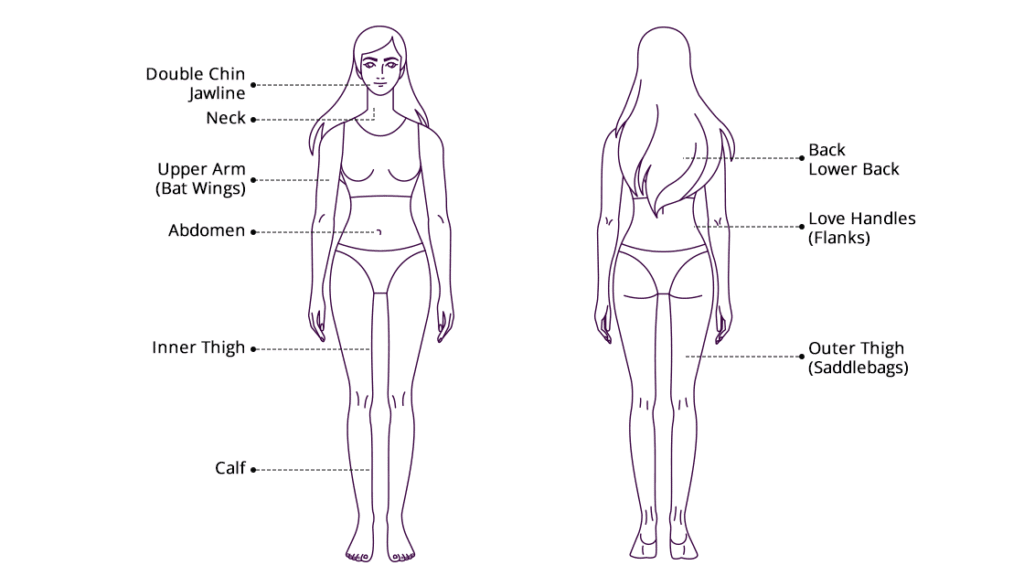
2.5 Male Body Sculpting
Masculine body contouring presents distinct considerations due to differences in fat distribution patterns, skin thickness, and aesthetic goals. Male patients often seek more dramatic definition and angular contours compared to the softer curves typically desired in female body sculpting.
2.5.1 Chest (Pseudogynecomastia)
Male chest contouring addresses pseudogynecomastia, a condition characterized by excess adipose tissue in the pectoral region that mimics true gynecomastia. Laser lipolysis offers an effective non-surgical option for reducing chest fat while promoting skin tightening. The procedure targets subcutaneous adipose deposits without affecting glandular tissue, making it suitable for cases of pure fatty pseudogynecomastia. Treatment requires careful energy distribution to maintain natural chest contours and avoid irregularities. The thermal effect can stimulate collagen production, contributing to improved skin firmness and chest definition. Patient selection is crucial, as individuals with significant glandular tissue may require alternative treatment approaches. Results include improved chest contour and enhanced masculine chest definition within 8-10 weeks post-treatment.
2.5.2 Abdomen & Flanks
Male abdominal and flank contouring focuses on creating defined waist definition and reducing central adiposity that obscures underlying musculature. Men typically carry more visceral fat, though laser lipolysis specifically targets subcutaneous deposits. The treatment approach emphasizes creating angular transitions and maintaining masculine body proportions. Energy delivery parameters may require adjustment for male patients due to typically thicker skin and different fat distribution patterns. The procedure can effectively reduce waist circumference while enhancing the visibility of underlying abdominal musculature. Treatment success correlates with baseline fitness level and body fat percentage, with more athletic individuals typically achieving superior definition. Results include improved waist-to-hip ratio and enhanced abdominal contour definition.
3. Safety First: What to Expect Before and After Treatment
Patient safety remains the paramount concern in laser lipolysis procedures, requiring comprehensive pre-treatment evaluation, appropriate patient selection, and thorough post-treatment monitoring. Understanding the safety profile and potential complications is essential for both practitioners and patients considering this treatment modality.
3.1 Pre-Treatment Consultation: Setting Realistic Goals
The pre-treatment consultation process forms the foundation of successful laser lipolysis outcomes, requiring comprehensive patient assessment and realistic goal establishment. During this crucial phase, practitioners must evaluate patient anatomy, medical history, and aesthetic objectives to determine treatment suitability. Detailed body composition analysis, including measurements and photographic documentation, establishes baseline parameters for outcome assessment. Skin quality evaluation, including elasticity and thickness measurements, influences treatment planning and expected results. Patient education regarding the mechanism of action, expected timeline for results, and potential limitations ensures informed consent and appropriate expectations. The consultation should address lifestyle factors that may impact treatment success, including diet, exercise habits, and weight stability, as these elements significantly influence long-term outcomes.
3.2 Who Should Avoid Laser Lipolysis?
People with obesity – This treatment targets localized fat, not overall weight loss.
Individuals with loose or significantly sagging skin – Limited skin elasticity may reduce the effectiveness of results.
Pregnant or breastfeeding women – Laser lipolysis is not recommended during or immediately after pregnancy.
Those trying to conceive – It’s advised to postpone treatment during this period.
People with certain medical conditions, including uncontrolled diabetes, cardiovascular disease, liver or kidney disorders, epilepsy, active cancer, pacemaker implantation, photosensitivity disorders, uncontrolled hypertension, patients with open wounds, infections, or skin lesions in the treatment area.
Smokers – Smoking affects circulation and healing; cessation is recommended before treatment.
Individuals with unrealistic expectations or body dysmorphic disorder – A psychological evaluation may be advised.
Older patients with poor skin elasticity – May experience limited tightening post-procedure.
3.3 Understanding the Procedure: What Happens During Treatment
The laser lipolysis procedure follows a standardized protocol designed to maximize safety while achieving optimal fat reduction results. Treatment begins with patient positioning and area preparation, including cleansing and marking of treatment zones. Protective eyewear is mandatory for both patient and practitioner due to laser energy exposure. The laser handpiece delivers controlled energy through direct skin contact, with integrated cooling systems maintaining surface temperature within safe parameters. Treatment duration varies based on area size and individual parameters, typically ranging from 20-40 minutes per region. Real-time temperature monitoring ensures thermal parameters remain within therapeutic ranges while preventing thermal injury. Patients may experience mild warmth and tingling sensations during treatment, with most describing the procedure as comfortable and well-tolerated.
3.4 Immediate Aftercare Instructions
Stay well-hydrated to support fat metabolism and lymphatic drainage.
Resume normal activities right away, including light cardio exercise.
Avoid strenuous activity involving the treated area for at least 24 hours.
Apply a cold compress if swelling or discomfort occurs.
Limit sun exposure on treated areas to reduce the risk of hyperpigmentation.
Monitor for unusual symptoms, such as persistent swelling, pain, or discoloration—report any concerns to your provider.
Attend follow-up appointments to track progress and discuss additional sessions if needed.
4. Maximize Your Investment: Lifestyle Tips That Boost Results
Optimizing laser lipolysis outcomes requires a comprehensive approach that extends beyond the treatment itself. Strategic lifestyle modifications and supportive therapies can significantly enhance results while promoting long-term maintenance of achieved improvements.
4.1 Pairing with Lymphatic Massage
Lymphatic drainage massage serves as a valuable adjunct to laser lipolysis treatment, facilitating the elimination of disrupted fat cell contents through the body’s natural drainage systems. The mechanical stimulation provided by specialized massage techniques enhances lymphatic flow, potentially accelerating the removal of released fatty acids and glycerol. Treatment timing is crucial, with massage sessions typically initiated 48-72 hours post-laser treatment to allow initial inflammatory responses to subside. Specialized practitioners trained in post-lipolysis massage techniques can provide optimal drainage patterns that follow anatomical lymphatic pathways. The frequency and duration of massage sessions should be tailored to individual response patterns and treatment area characteristics. Combined with adequate hydration, lymphatic massage may reduce recovery time and enhance visible results. Patients should be educated about proper massage techniques for self-administration between professional sessions.
4.2 Post-Treatment Hydration and Nutrition
Nutritional support plays a crucial role in optimizing laser lipolysis outcomes and supporting the body’s natural fat metabolism processes. Adequate hydration is essential for facilitating lymphatic drainage and supporting cellular metabolic processes. Recommended water intake should increase by 20-30% above baseline levels during the post-treatment period. Nutritional emphasis should focus on anti-inflammatory foods that support healing while providing essential nutrients for tissue repair. Omega-3 fatty acids, antioxidants, and lean proteins form the foundation of an optimal post-treatment diet. Limiting processed foods, excessive sodium, and refined sugars can minimize inflammation and support better results. Alcohol consumption should be moderated as it can impair liver function and interfere with fat metabolism. Nutritional supplementation, including vitamin C and zinc, may support tissue healing and collagen synthesis. Long-term dietary habits significantly impact result maintenance and overall treatment success.
4.3 Exercise and Lifestyle Tips for Longevity
Strategic exercise implementation following laser lipolysis treatment can enhance results while promoting long-term body contouring maintenance. Low-impact cardiovascular activities support circulation and lymphatic drainage while avoiding excessive strain on treated areas. Resistance training should be gradually reintroduced, focusing on muscle groups that complement the treated regions. Exercise timing should allow for initial healing, typically beginning with light activities within 24-48 hours post-treatment. Progressive intensity increases prevent overexertion while supporting continued improvement. Consistency in physical activity patterns provides better long-term results than sporadic high-intensity efforts. Sleep quality significantly impacts recovery and metabolic processes, requiring 7-9 hours of quality rest nightly. Stress management techniques support hormonal balance and prevent cortisol-induced fat accumulation. Weight stability is crucial for maintaining results, as significant weight fluctuations can affect treated areas.
4.4 Understanding Fat Redistribution Risks
Fat redistribution represents a significant consideration following laser lipolysis treatment, as the permanent reduction of fat cells in treated areas may alter overall body fat distribution patterns. When overall caloric intake exceeds expenditure, remaining fat cells throughout the body can expand to accommodate excess energy storage. This expansion may be more noticeable in untreated areas, potentially creating new areas of concern or altering overall body proportions. Patient education regarding this phenomenon is crucial for setting realistic expectations and encouraging lifestyle maintenance. Long-term weight stability becomes essential for preserving treatment results and preventing compensatory fat accumulation in adjacent areas. Regular monitoring and potential maintenance treatments may be necessary for individuals prone to weight fluctuations. Understanding individual genetic predispositions to fat storage patterns helps predict potential redistribution risks. Comprehensive lifestyle modifications provide the best defense against unwanted fat redistribution effects.
5. Real Results: Testimonials and Case Studies
Clinical evidence and patient experiences provide valuable insights into the real-world effectiveness of laser lipolysis treatment. Understanding typical outcomes, timelines, and patient satisfaction rates helps establish realistic expectations and demonstrates the technology’s therapeutic potential.
5.1 Before & After Photo Descriptions
Visual documentation of laser lipolysis results demonstrates the treatment’s effectiveness across various body areas and patient demographics. Abdominal treatments typically show progressive circumferential reduction beginning at 2-3 weeks post-treatment, with maximum results visible at 8-12 weeks. Standardized photography protocols ensure accurate documentation of changes, utilizing consistent lighting, positioning, and measurement techniques. Flank treatments demonstrate improved waist definition and reduced lateral protrusions, with measurements showing average reductions of 2-4 centimeters in circumferential measurements. Arm treatments reveal enhanced definition and reduced circumference, particularly notable in the posterior upper arm region. Facial treatments show improved jawline definition and reduced submental fullness, with subtle but significant changes in profile appearance. Patient demographics influence results, with younger individuals typically showing superior skin retraction and more dramatic contouring. Multiple treatment sessions may demonstrate cumulative improvements beyond single-session outcomes.
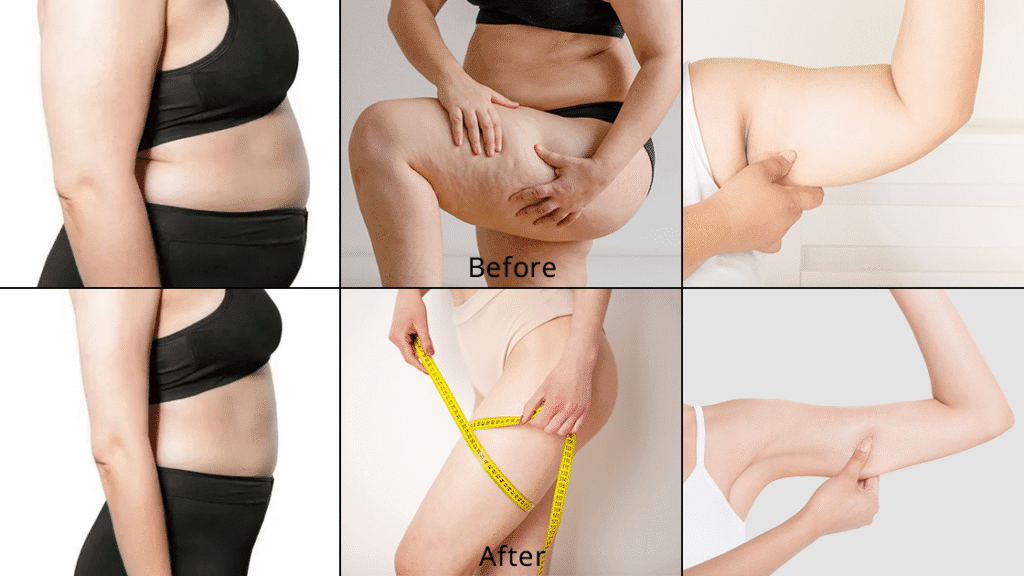
5.2 Short Quotes from Real Patients
Patient testimonials provide valuable insights into the subjective experience of laser lipolysis treatment and perceived outcomes. Common themes include satisfaction with the non-invasive nature of the procedure and minimal downtime requirements. Many patients report exceeding their initial expectations regarding comfort during treatment and recovery ease. Long-term satisfaction correlates with appropriate patient selection and realistic goal setting during the consultation process. Patients frequently express appreciation for the gradual, natural-appearing results that avoid the dramatic changes associated with surgical procedures. Some individuals note improved confidence and clothing fit as significant quality-of-life improvements. Realistic testimonials acknowledge that results require time to develop and may necessitate lifestyle maintenance for optimal longevity. Patient feedback often emphasizes the importance of choosing experienced practitioners and following post-treatment recommendations for best outcomes.
5.3 Sample Case Study: 4-Week Midsection Progress
A representative case study involves a 34-year-old female patient with localized abdominal adiposity resistant to diet and exercise modifications. Pre-treatment assessment revealed good skin elasticity, stable weight for 12 months, and realistic expectations for gradual improvement. Initial measurements documented a 34-inch waist circumference at the umbilical level, with ultrasound measurements confirming 2.1 cm subcutaneous fat thickness. Single-session laser lipolysis treatment covered the entire abdominal region using standardized protocols with continuous temperature monitoring. Week 1 post-treatment showed minimal visible changes with mild erythema resolution within 48 hours. Week 2 demonstrated subtle contouring with 0.5-inch circumferential reduction and patient-reported improved clothing fit. Week 3 revealed continued improvement with 1.2-inch total reduction and enhanced abdominal definition. Week 4 measurements confirmed 1.8-inch circumferential reduction with ultrasound showing 28% fat layer thickness decrease. Patient satisfaction was high, with plans for maintenance lifestyle modifications and potential additional treatments for further enhancement.
6. FAQs about Laser Lipolysis
Most patients notice gradual fat reduction and skin tightening within 2 to 4 weeks, with full results appearing after 8 to 12 weeks as the body naturally eliminates broken-down fat cells.
The procedure is generally well-tolerated with minimal discomfort. You may feel a warm sensation or mild tingling as the laser targets fat cells, but cooling systems help keep the skin comfortable throughout.
Laser lipolysis is a great non-surgical alternative for targeted fat reduction and skin tightening. However, it’s best suited for mild to moderate fat deposits and not for large-volume fat removal like surgical liposuction.
Yes! The treated fat cells are permanently destroyed and eliminated by your body. Maintaining a healthy lifestyle will help prevent remaining fat cells from expanding again.
Typically, 1 to 3 sessions spaced several weeks apart are recommended depending on your goals and the treated area. Your provider will tailor a plan based on your individual needs.
While treated fat cells won’t return, untreated fat cells can still expand. Weight gain may affect your overall results, so maintaining a balanced diet and regular exercise is key to long-lasting benefits.
7. Conclusion: Sculpt Smarter, Not Harder
레이저 지방 분해 is a breakthrough in body contouring, offering a safe, effective, and convenient alternative to surgery. It permanently reduces fat cells while tightening skin through collagen stimulation, delivering comprehensive aesthetic benefits with minimal downtime. Success depends on proper patient selection, realistic goals, and personalized treatment plans tailored to anatomy and desires. Maintaining stable weight and following post-care instructions help achieve optimal, gradual results over several months. As technology advances and our understanding of fat biology grows, laser lipolysis continues to improve, bridging the gap between topical treatments and surgical options. Its rising popularity reflects demand for non-invasive procedures that deliver real results. For those seeking body sculpting, laser lipolysis combines effectiveness, safety, and convenience. A thorough consultation with experienced professionals ensures customized plans that align with individual goals and maximize satisfaction.

